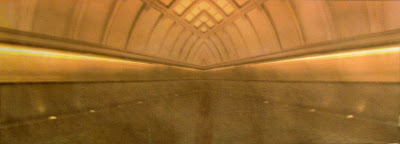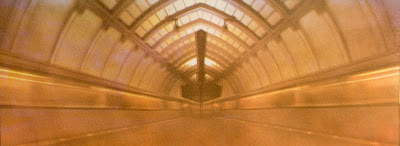
Here’s a couple of gum bichromate prints I’ve been working on recently. They’re not that great, but it’s an issue with printing, not with the images themselves. For some reason, the yellow layer seemed really overexposed in both of these prints (I printed the yellow layer exactly like I always have, and don’t know what caused it to be so intense). I soaked them in water with a splash of ammonia to remove excess exposure, but that didn’t really work. So I decided to continue on with the other colors, thinking I could print multiple layers to correct for too much yellow.
However, when I printed the magenta layer, everything seemed strongly orange tinted, something that was not improved when I printed the cyan layer. After printing the black layer, I gave up. On one of the prints, I managed to print the black layer out of registration. I tried removing it (usually easy to do when the layer is still wet), but it wouldn’t budge.
I’ll try again with these in a few days. I’m working on two different gum prints right now, and want to finish those before redoing these. I’m trying something different with one of these new prints, and if it works, I might apply the same idea to these images (more on that when I post those prints in a few days).

About these images: They were taken in the Washington, DC metro last summer. They are both photos of subway trains moving through stations. I copied the photos and flipped them, to create semiabstract, impossible spaces. I actually made these images, and the color separations for them, last fall, before I had even started making gum prints. By the time I started printing my first gum bichromates, the themes I was working with for my exhibit last spring were much more concrete, and these pieces just didn’t fit. All of the pieces in that exhibit (many can be seen if you look through old blog entries) were straightforward shots with minimal manipulation. Now that the show has come and gone, I’m interested in exploring how color and image can be manipulated, and how those manipulations work with various alternative processes. These two images fit nicely into that exploration.
No comments:
Post a Comment